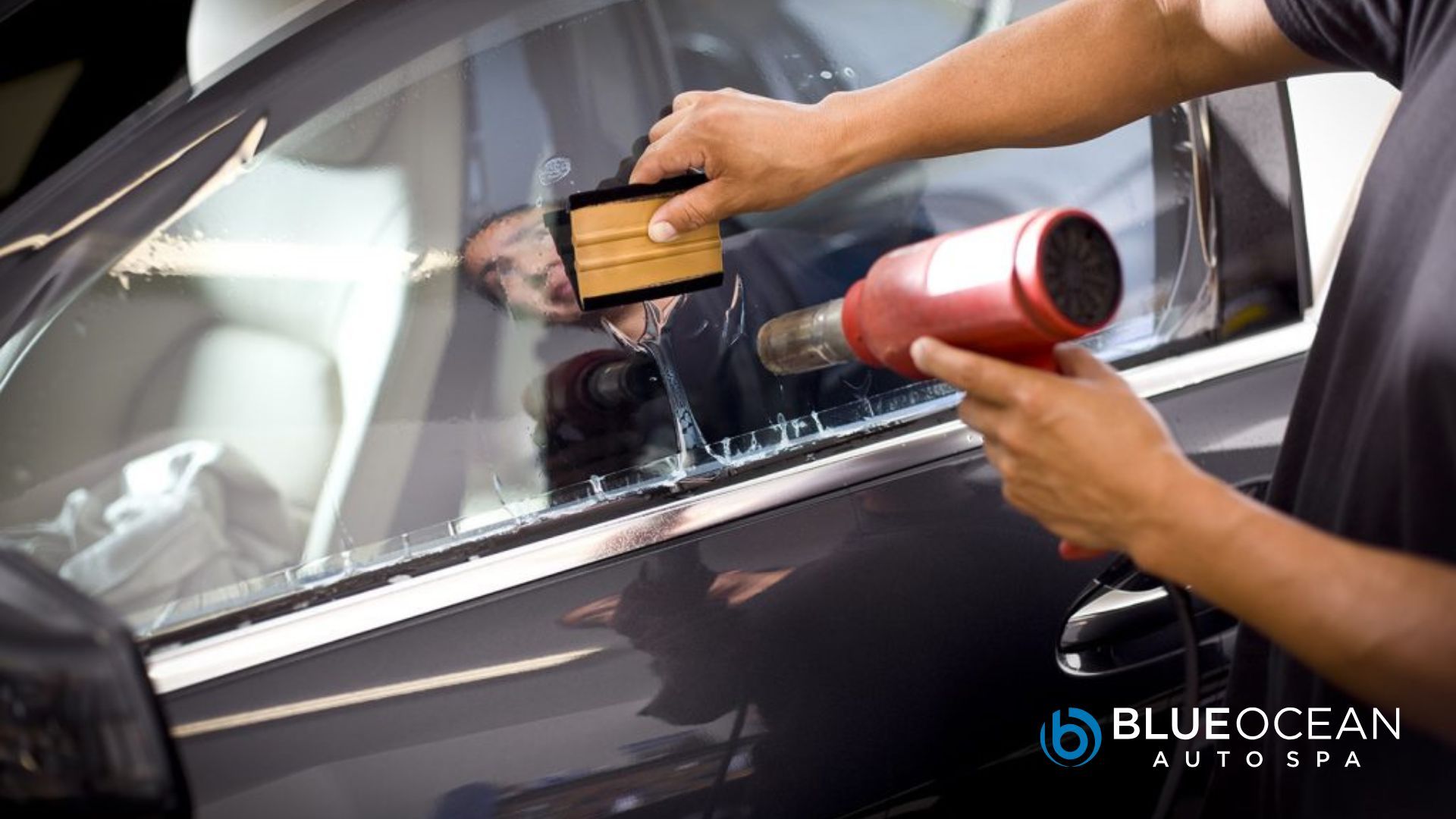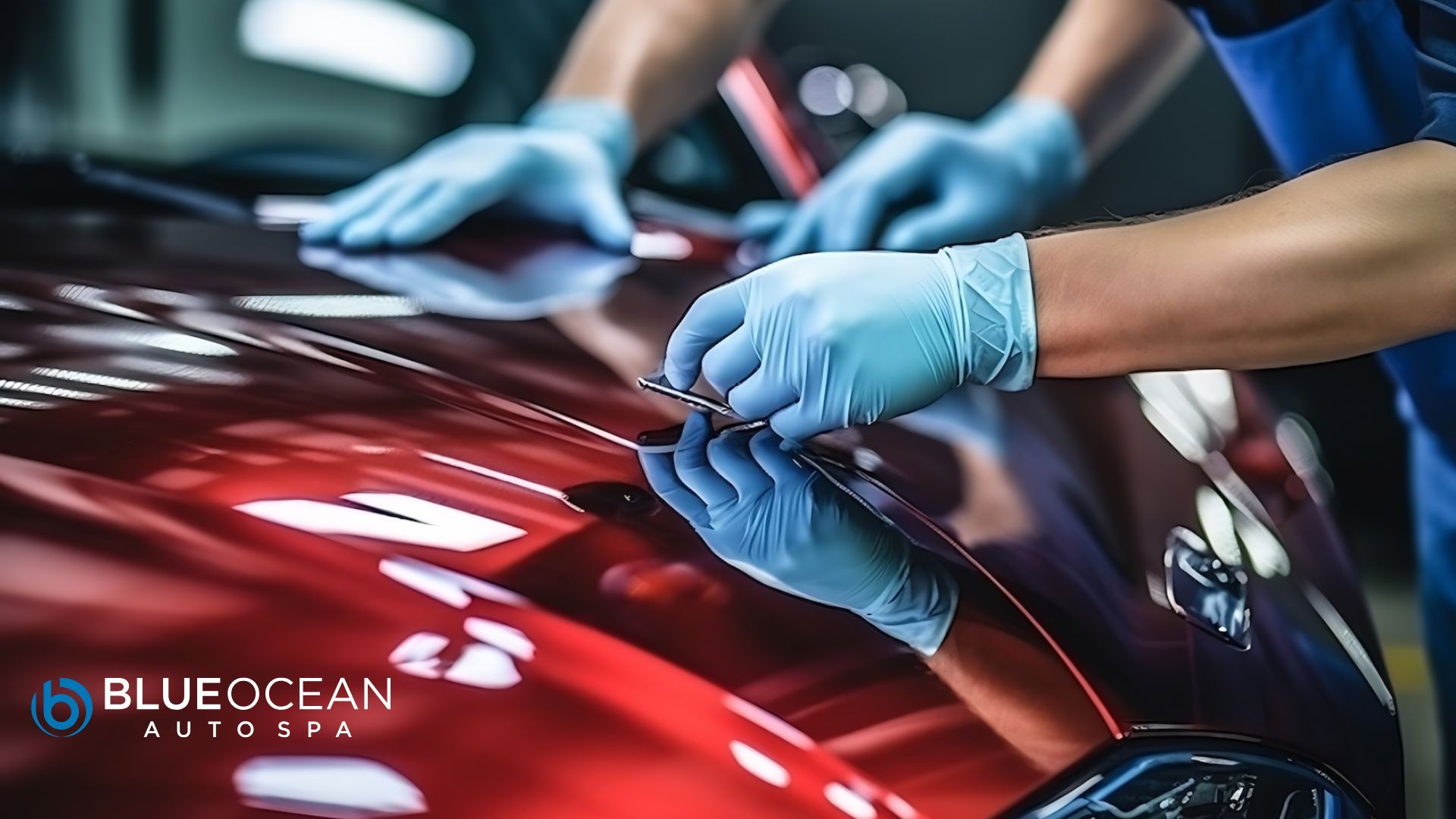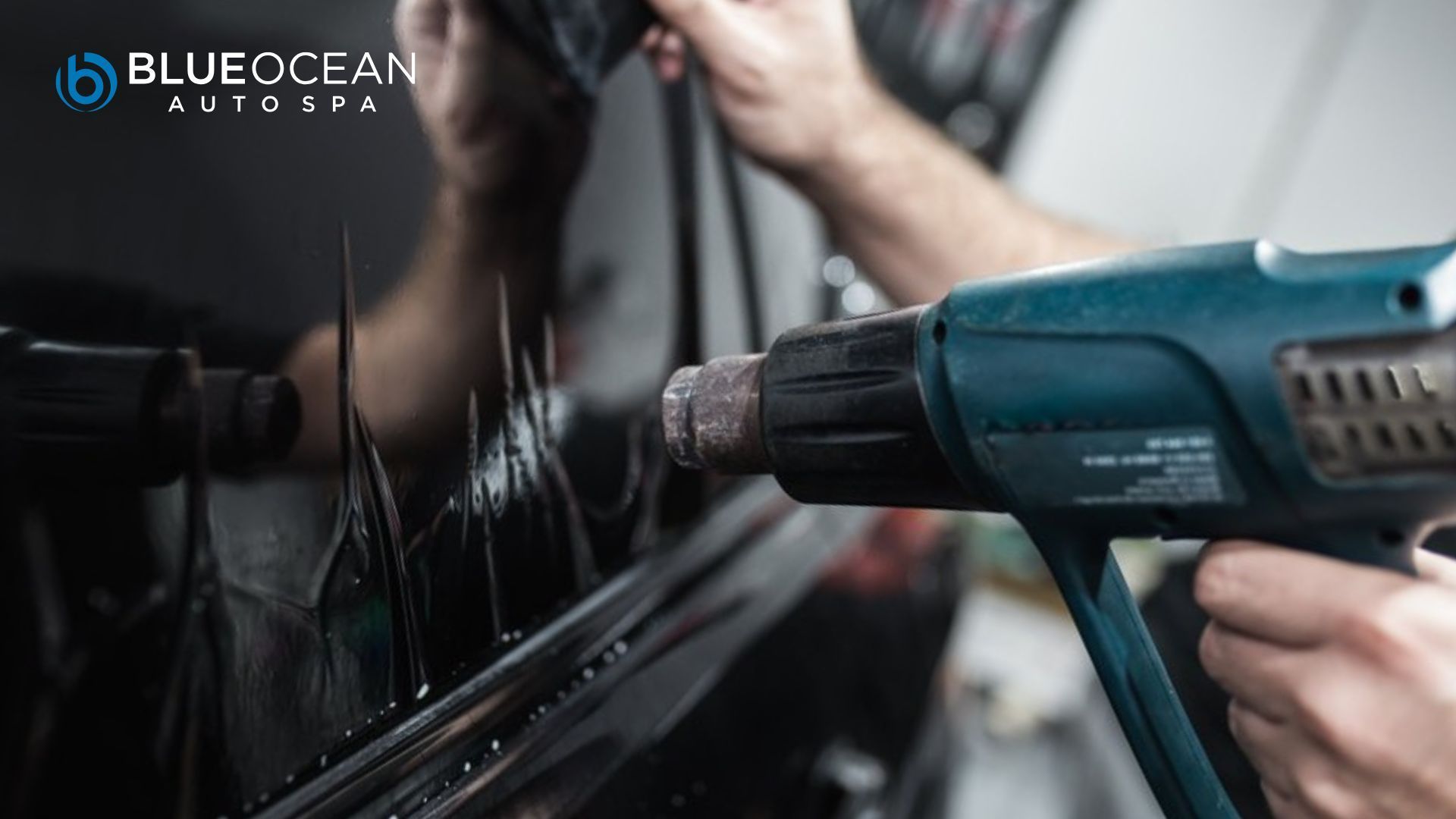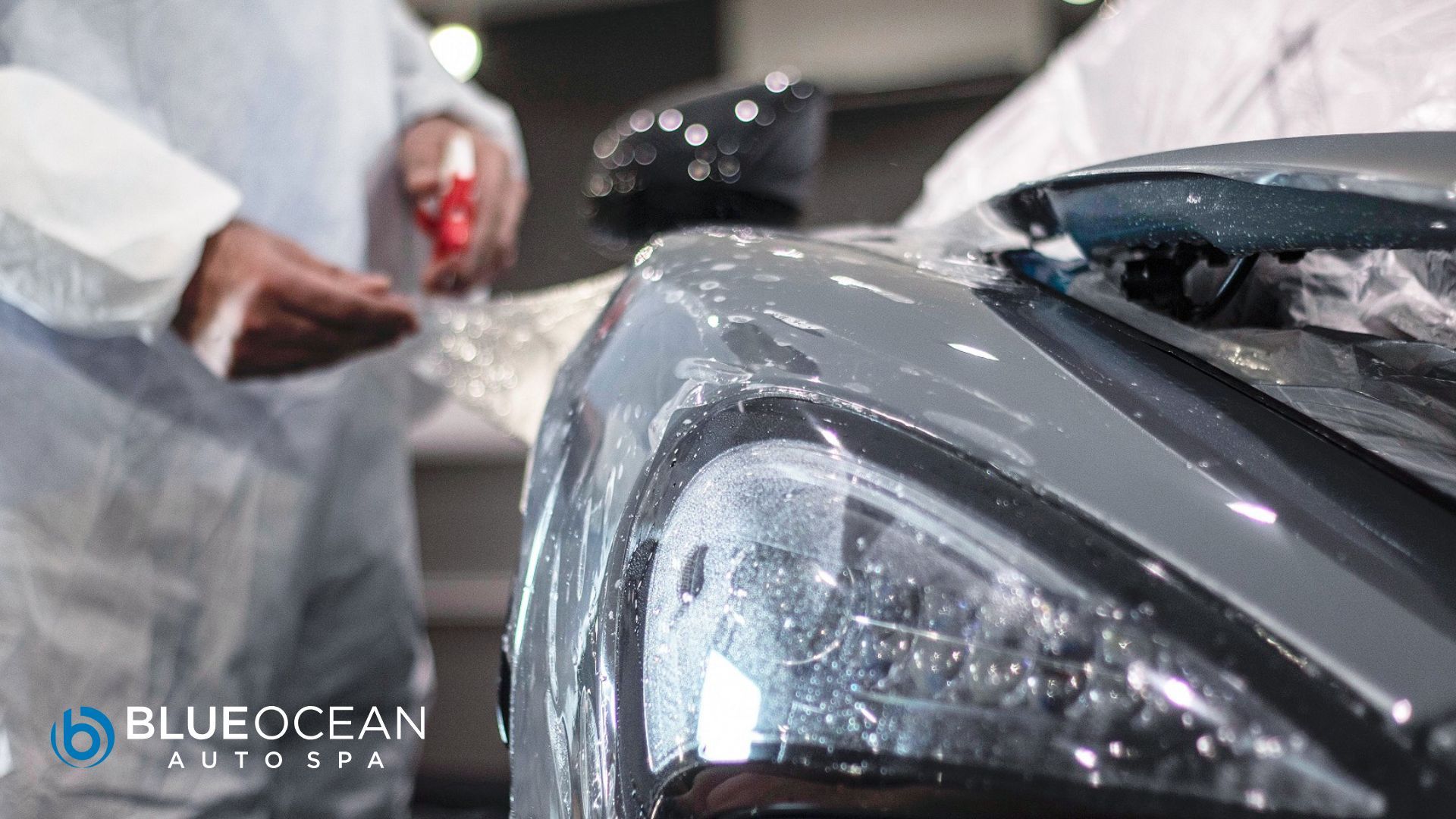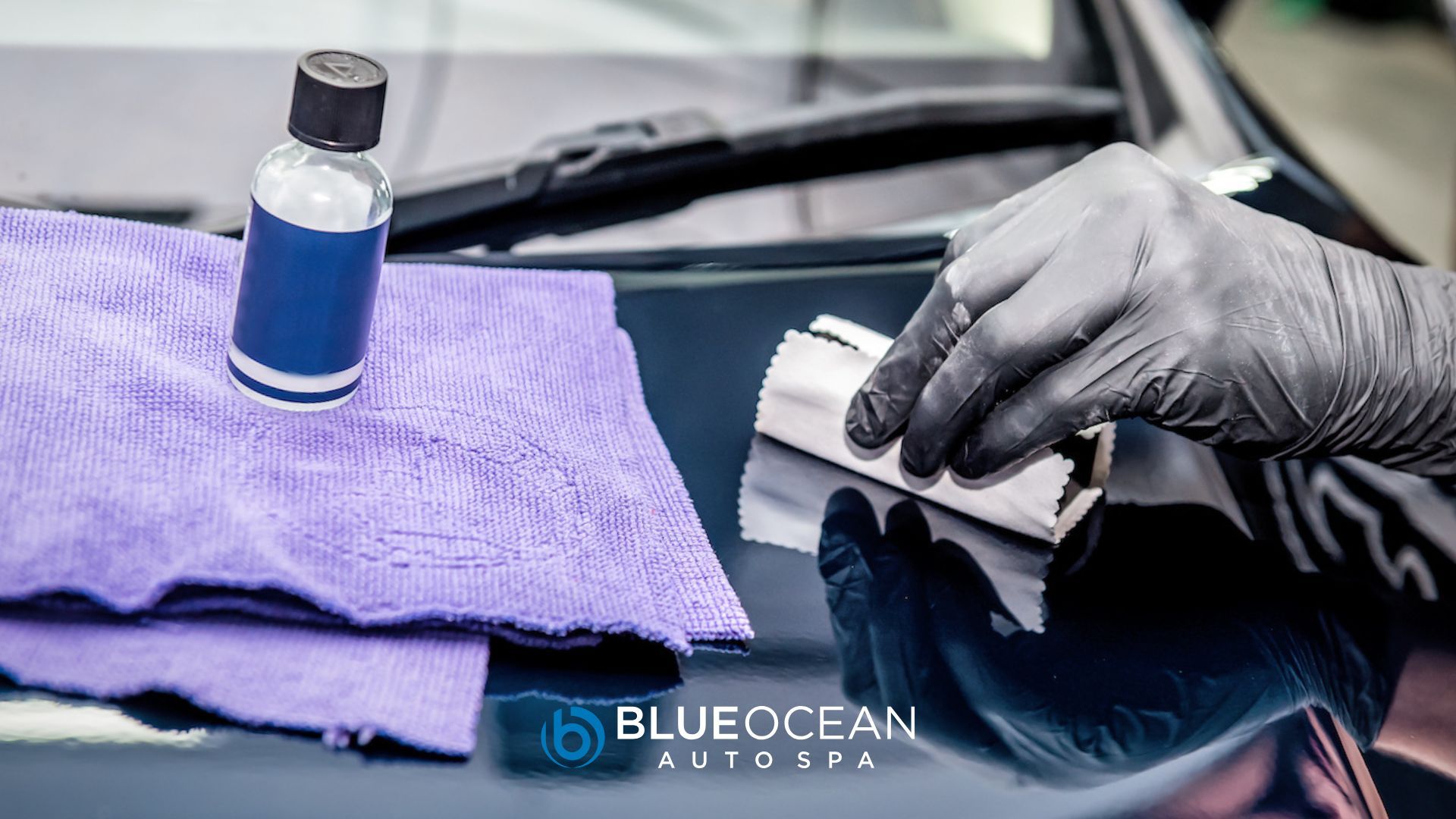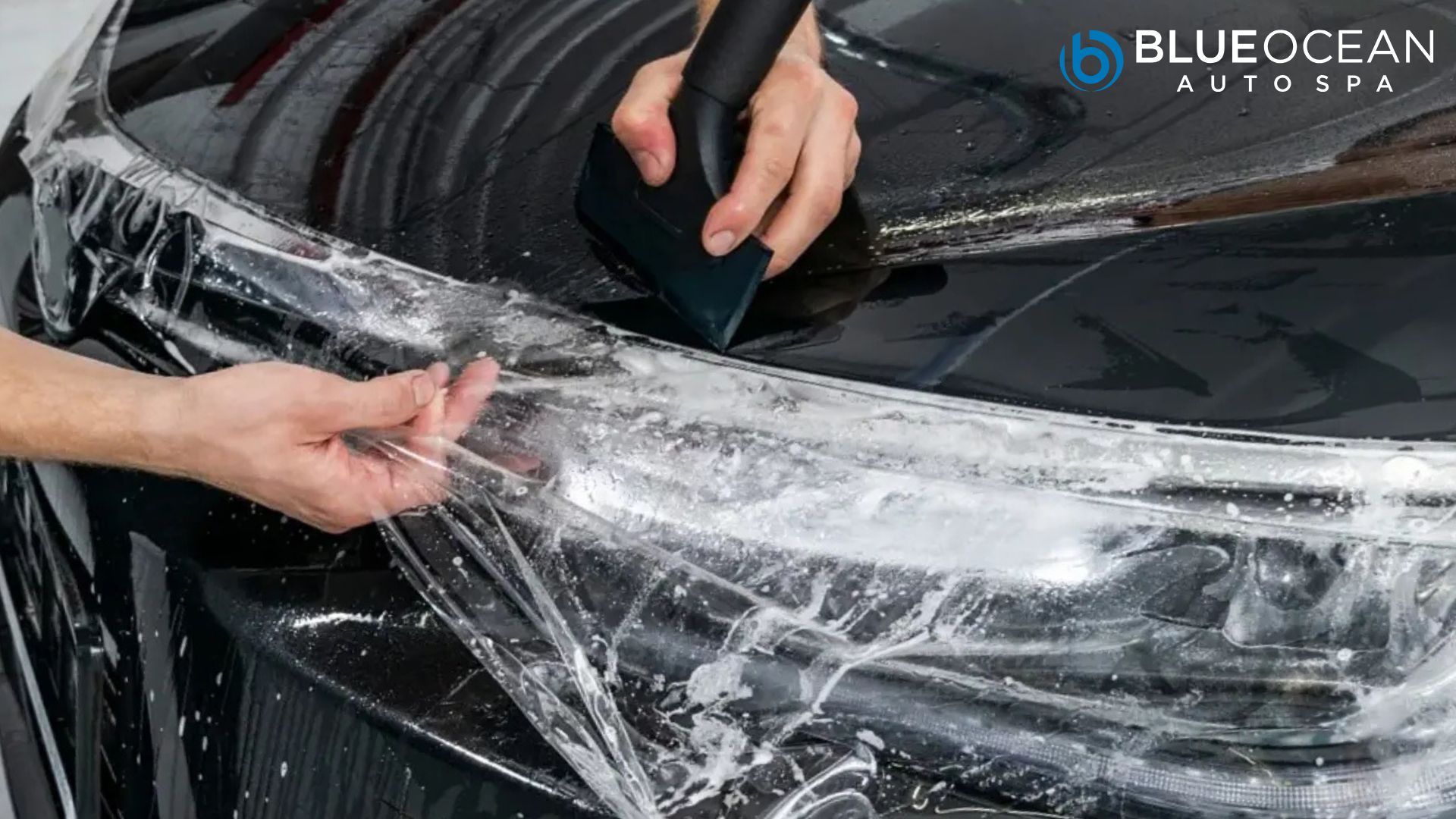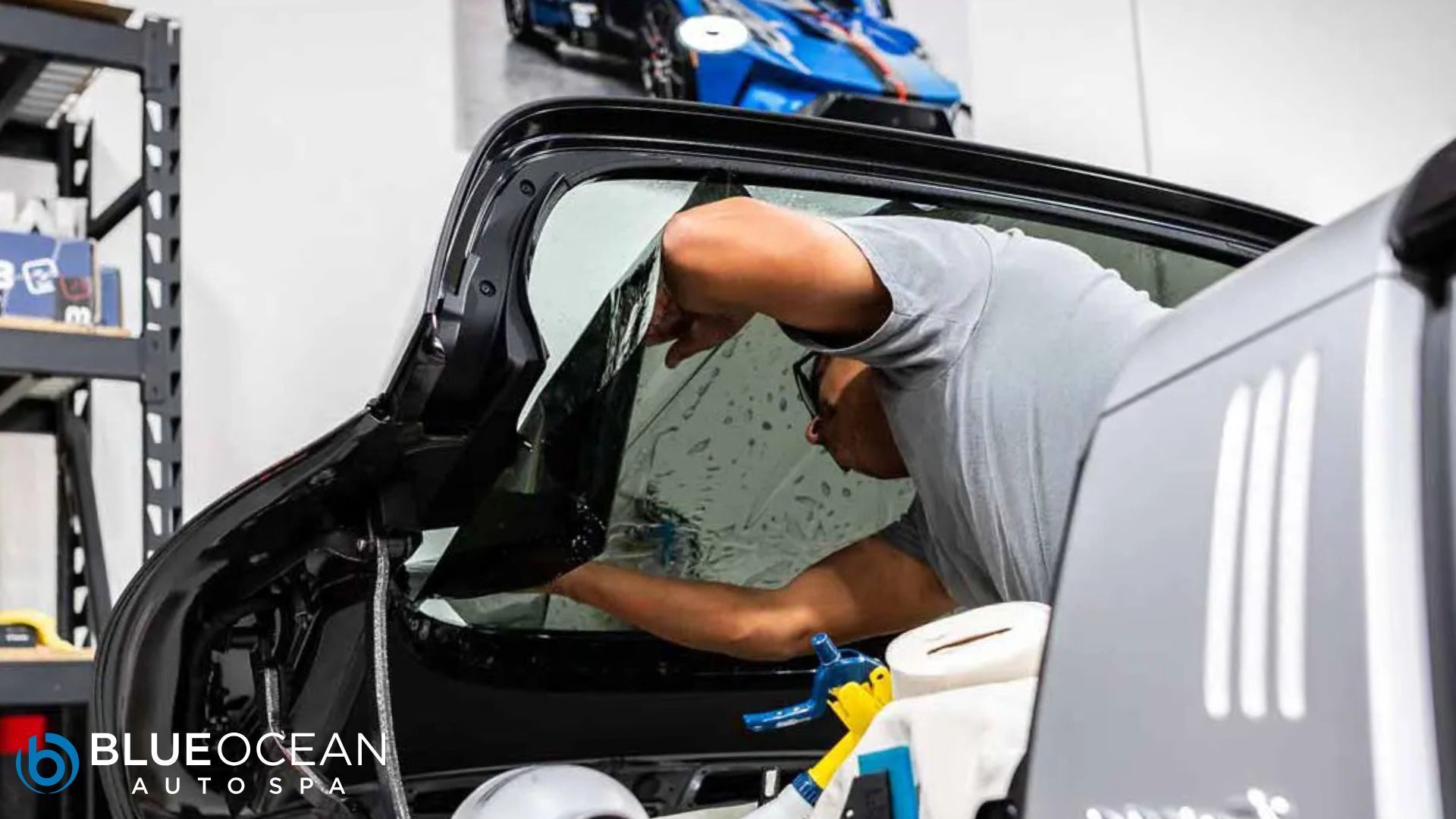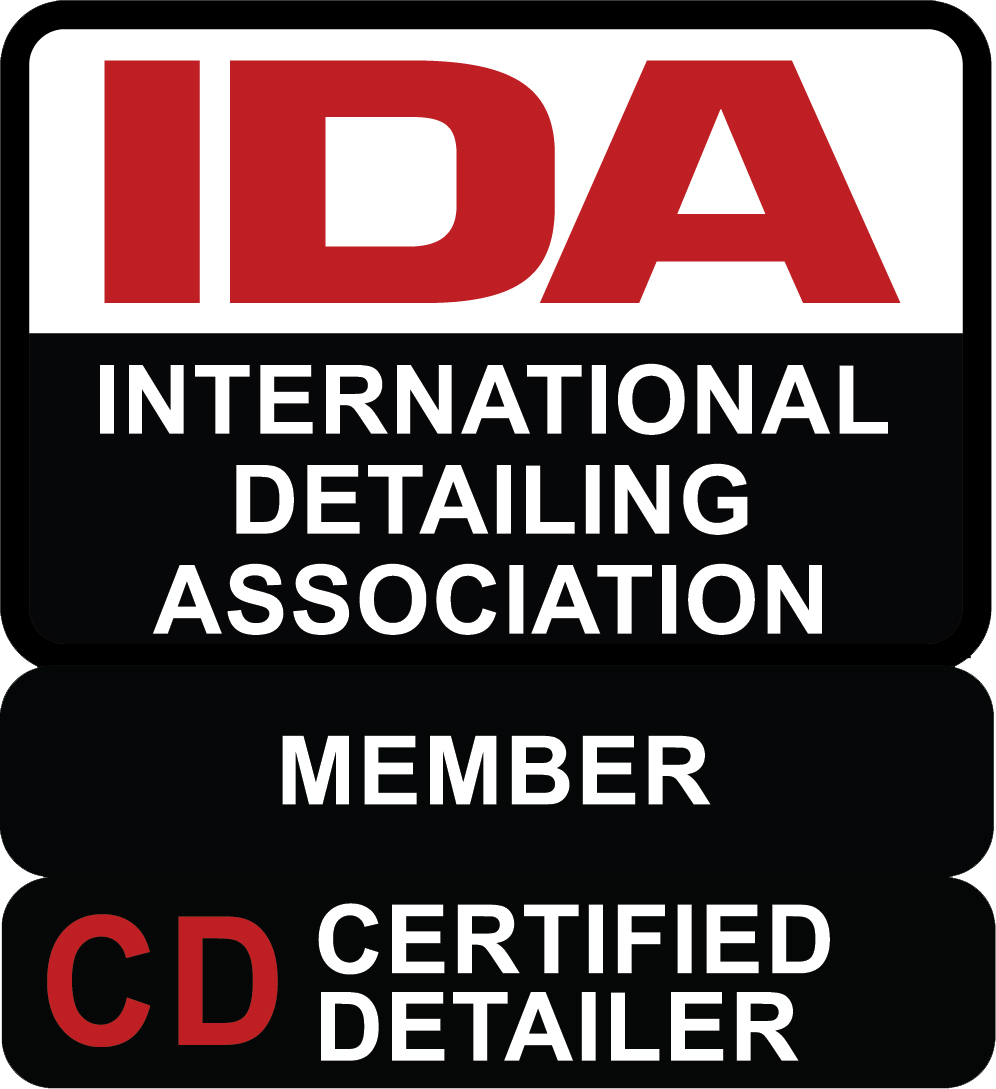Ready, Set, Go: When to Drive After Applying Ceramic Coating
Categories: Ceramic Coating
Tags: car coating Cedar Park Texas, ceramic coating Texas, how long after ceramic coating can I drive my car
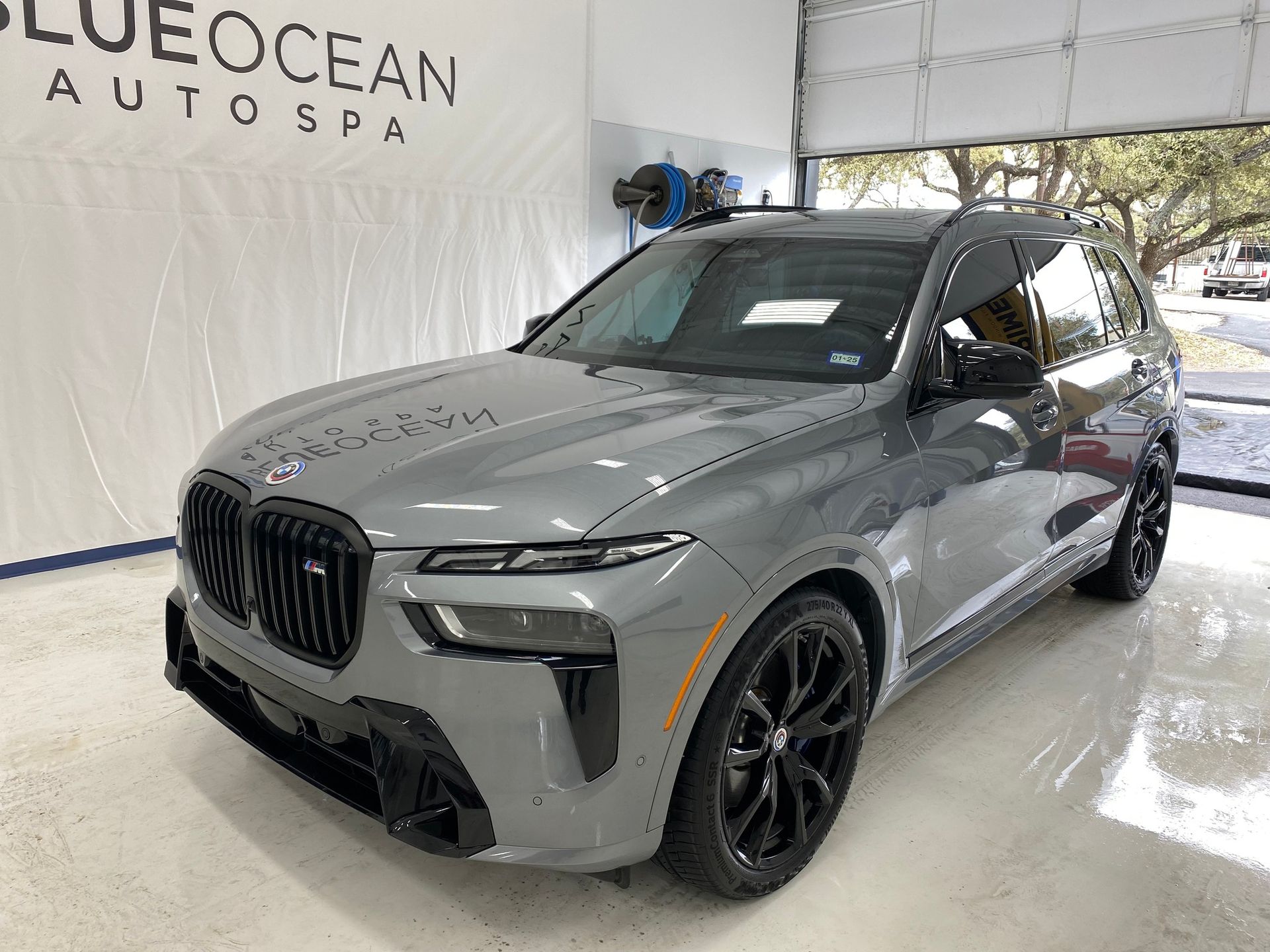
You’ve heard that good things come to those who wait, and allowing the ceramic coating to cure properly is no exception.
But how long after ceramic coating can I drive my car? Understanding the nuances of drying time and the impact of external factors will be essential for the longevity of your coating.
Stick around to uncover the best waiting period and essential tips for a flawless finish.
Key Takeaways
- Proper curing is crucial for durability and bonding with the surface.
- Follow the manufacturer’s recommended wait time before driving.
- Avoid moisture and harsh chemicals during the curing period.
- Ensure even coating thickness for maximum protection and consistency.
Importance of Curing Time
Before you drive your vehicle after applying a ceramic coating in Texas, it’s essential to understand the importance of allowing the coating to cure properly. The curing process is critical as it directly impacts the durability and effectiveness of the ceramic coating. Proper time management during this phase is key to ensuring the best results.
The curing process refers to the time it takes for the ceramic coating to fully bond with the surface of your vehicle. This bonding period is vital for the coating to develop its full protective properties. Rushing this step can lead to premature wear and reduced longevity of the coating. So, patience is crucial to allow for a thorough and complete curing process.
Effective time management is critical when considering when to drive your vehicle after applying ceramic coating. Most ceramic coatings require a curing period of around 24 to 48 hours before being exposed to water or other elements. During this time, it’s vital to keep your vehicle in a controlled environment to prevent any interference with the curing process. This means avoiding rain, car washes, or any physical contact with the coating.
Factors Affecting Drying Time
Factors that can influence the drying time of car coating in Cedar Park Texas include environmental conditions, application thickness, and the specific formulation of the product. Weather conditions play a significant role in how quickly a ceramic coating dries. High temperatures can accelerate the drying process, while low temperatures can slow it down. Similarly, humidity levels can impact drying time. High humidity levels can hinder the evaporation of solvents in the coating, prolonging the drying process. On the other hand, low humidity levels can lead to faster evaporation and, consequently, quicker drying times.
The thickness of the ceramic coating applied also affects drying time. Thicker layers take longer to dry compared to thin, even coats. It’s important to follow the manufacturer’s recommendations regarding the application thickness to ensure the best drying times. Additionally, the specific formulation of the ceramic coating product can influence how quickly it dries. Some formulations are designed to dry faster than others based on their chemical composition.
To optimize drying time, consider applying ceramic coatings in moderate temperatures with average humidity levels. Ensure a uniform and appropriate thickness during application. By controlling these factors, you can help expedite the drying process and achieve the best results from your ceramic coating.
Recommended Waiting Period
For best results, adhere to the manufacturer’s recommended waiting period after applying ceramic coating. The waiting period is essential to guarantee that the ceramic coating has sufficient time to cure and bond effectively to the surface of your vehicle. The drying process plays a significant role during this waiting period, allowing the coating to form a durable protective layer.
Different ceramic coating products may have varying recommended waiting periods, so it’s important to follow the specific guidelines provided by the manufacturer. Factors such as humidity, temperature, and application techniques can influence the drying process and impact the waiting period. To achieve maximum results, it’s advisable to wait at least 24 to 48 hours before driving your vehicle after applying ceramic coating.
During the waiting period, avoid exposing the coated surface to any moisture or harsh conditions that could interfere with the curing process. Properly allowing the ceramic coating to dry and cure will enhance its durability and longevity. By following the manufacturer’s recommended waiting period and considering the drying process and application techniques, you can guarantee that your ceramic coating provides maximum protection for your vehicle’s paintwork.
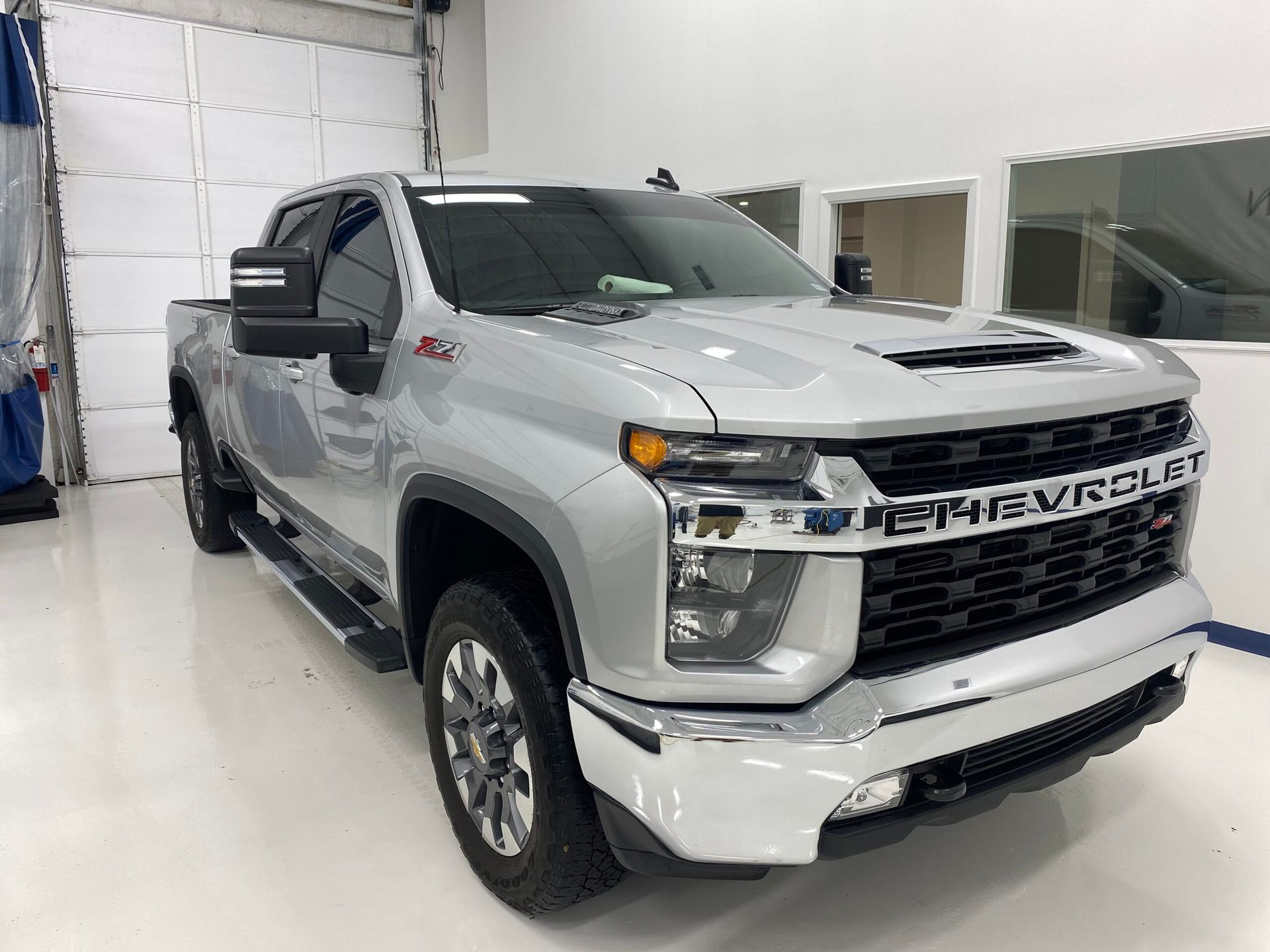
Tips for Optimal Results
Enhance the effectiveness of your ceramic coating application by implementing these expert tips for the best results.
When it comes to application techniques, make sure that the surface you’re coating is meticulously cleaned and protected from any contaminants. Use a clay bar or iron remover to eliminate impurities that could hinder the bonding of the ceramic coating. Additionally, apply the product in a cool, shaded area to prevent essential drying, which can lead to uneven coverage.
For best results, follow the manufacturer’s instructions regarding the curing time. This step is important for allowing the coating to bond with the surface and provide long-lasting protection.
Once the ceramic coating has cured, it’s essential to maintain it properly to preserve its effectiveness. Regularly wash your vehicle using a pH-neutral car shampoo to prevent dirt buildup that could degrade the coating over time.
When it comes to maintenance tips, consider using a ceramic coating booster or spray sealant every few months to rejuvenate the coating’s hydrophobic properties. This will ensure that water beads off the surface efficiently, keeping your vehicle looking sleek and protected.
Common Mistakes to Avoid
To ensure the peak performance and longevity of your ceramic coating, it’s essential to avoid common mistakes that could compromise its effectiveness. Here are some key points to keep in mind:
- Application errors: Proper ceramic coating application is vital for its effectiveness. One common mistake to avoid is applying the coating in direct sunlight or on a hot surface. This can cause the coating to cure too quickly, leading to uneven coverage and potential bonding issues. Additionally, failing to prep the surface adequately by thoroughly cleaning and decontaminating it before application can result in poor adhesion and reduce the coating’s durability.
- Post-coating care: After applying the ceramic coating, it’s important to follow the recommended curing time before exposing the vehicle to water or other elements. One mistake to avoid is using harsh chemicals or abrasive tools during maintenance, as these can damage the coating and diminish its protective properties. Regularly washing the vehicle with a pH-neutral car wash shampoo and using gentle wash mitts or microfiber towels will help preserve the coating and keep your vehicle looking its best.
- Ignoring touch-up maintenance: Over time, the ceramic coating may develop water spots, light swirl marks, or other imperfections. Ignoring these issues and failing to perform touch-up maintenance as needed can compromise the coating’s performance and appearance. By promptly addressing any minor defects with appropriate products and techniques, you can extend the life of your ceramic coating and maintain its protective benefits.
Final Checks Before Driving
Before hitting the road, it’s important to conduct a thorough visual inspection to make sure there are no streaks present on the ceramic coating.
Additionally, check meticulously for any water spots that might’ve formed during the curing process.
Visual Inspection for Streaks
Inspect the surface carefully for streaks to guarantee a flawless finish before driving your vehicle following the application of ceramic coating. To guarantee the best results, follow these steps:
- Streak Prevention: Employ proper application techniques such as using the right amount of product and ensuring even coverage to minimize streak formation.
- Streak Removal: In case streaks are present, utilize specialized products designed for ceramic coatings to gently remove them without damaging the coating.
- Post Coating Care: After streak removal, inspect the surface again to confirm all streaks are gone. If any remain, repeat the removal process until the surface is streak-free.
Checking for Water Spots
Check your vehicle’s surface for water spots before driving to guarantee a spotless finish post-ceramic coating application. Water spot prevention is important to maintain the pristine look of your vehicle.
To prevent water spots, make sure thorough drying techniques are applied after washing. Use a clean, soft microfiber towel to gently dry the surface, preventing water droplets from drying on the paint.
If water spots are present, prompt spot removal is essential. Use a specialized water spot remover or a mixture of vinegar and water to gently eliminate the spots.
Assessing Overall Coating Coverage
Check a thorough evaluation of the overall coating coverage on your vehicle’s surface before you begin driving, guaranteeing a flawless finish post-ceramic coating application.
Evaluating thickness:
- Utilize a paint thickness gauge to make sure the ceramic coating is applied uniformly across all panels.
- Measure the coating thickness at various points on the vehicle to identify any inconsistencies that may require touch-ups.
- Aim for a consistent thickness to maximize the protective benefits of the ceramic coating.
Ensuring consistency:
- Inspect the coating under proper lighting conditions to detect any areas that may appear uneven or patchy.
- Use a cross-hatch pattern to verify that the coating is evenly distributed on the surface.
- Address any uneven areas promptly to maintain a smooth and uniform finish.
Recap
Now that you’ve applied your ceramic coating, remember to give it the proper curing time before hitting the road. By understanding the factors that affect drying time and following the recommended waiting period, you can guarantee the best results.
Avoid common mistakes and perform final checks before driving to protect your coating and maintain its effectiveness. Remember, patience and attention to detail will pay off in the long run.
Drive safely and enjoy the benefits of your freshly coated vehicle.



